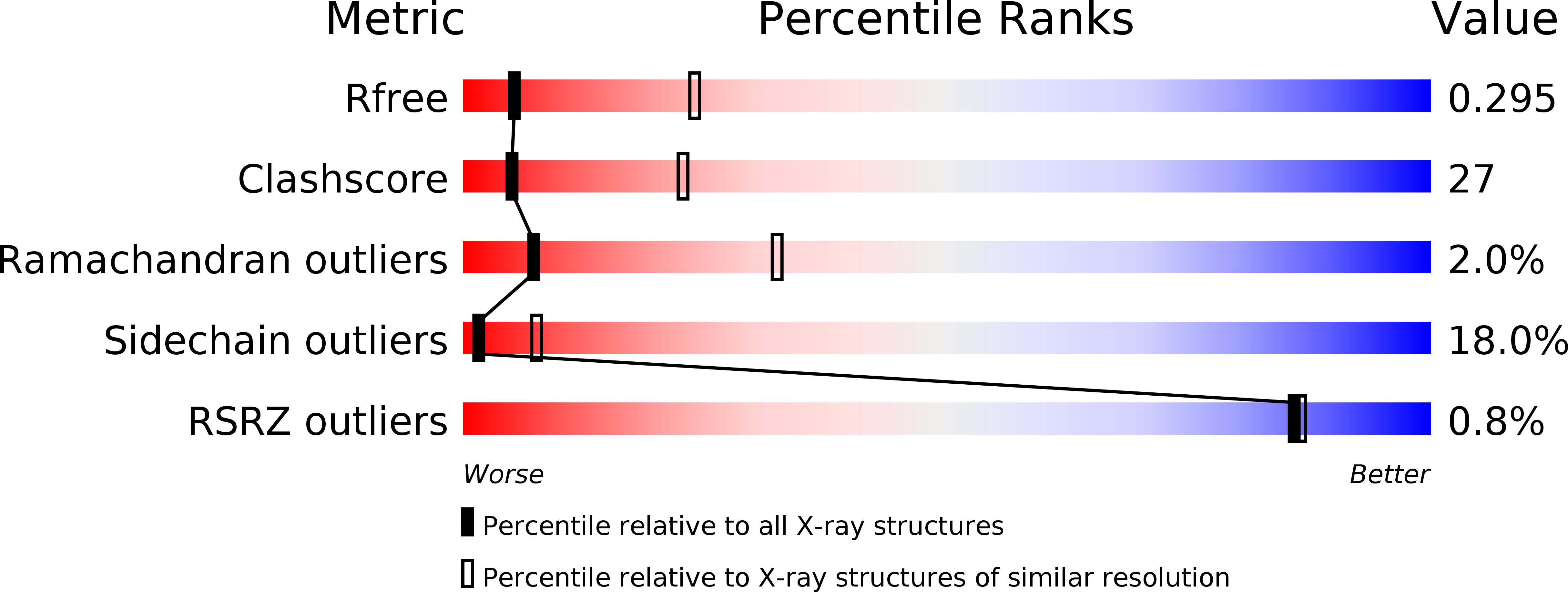
Deposition Date
2013-10-28
Release Date
2014-04-23
Last Version Date
2024-03-20
Entry Detail
PDB ID:
4NDW
Keywords:
Title:
Crystal STRUCTURE OF MYCOBACTERIUM TUBERCULOSIS ESX-1 SECRETED PROTEIN REGULATOR (EspR)
Biological Source:
Source Organism:
Mycobacterium tuberculosis (Taxon ID: 1773)
Host Organism:
Method Details:
Experimental Method:
Resolution:
3.30 Å
R-Value Free:
0.32
R-Value Work:
0.26
R-Value Observed:
0.26
Space Group:
P 32 2 1


